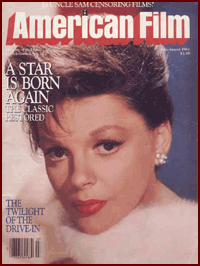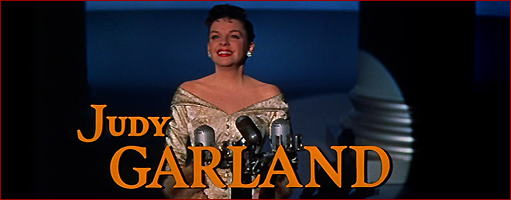

A
Star Is Born is a legendary film. 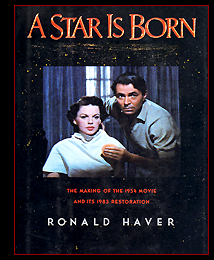 Not only because
it’s Judy Garland’s greatest film role, but
also because the story of the making of the film, its subsequent
butchering by Warner Bros. (yes, it was butchered!), and
the 1983 restoration, is a rare and fascinating look into “behind
the scenes” Hollywood, studio politics during the decline of the “Studio
System”, and the quest for artistic perfection. Not only because
it’s Judy Garland’s greatest film role, but
also because the story of the making of the film, its subsequent
butchering by Warner Bros. (yes, it was butchered!), and
the 1983 restoration, is a rare and fascinating look into “behind
the scenes” Hollywood, studio politics during the decline of the “Studio
System”, and the quest for artistic perfection.
The story of the making of A Star Is Born (and its restoration)
is beautifully told by the late Ronald Haver in his 1988 book “A
Star Is Born – The Making of the 1954 Film and Its 1983
Restoration”.Haver spearheaded the restoration
of Star, the first-ever major restoration of a film
by the American Film Institute, and his book provides rich details
about his efforts, and the efforts of many others, in restoring
most of the lost footage. The book also details the making of
the film in 1953/1954.
Click here to purchase the book.
Click here to go to the "Restoration Page" here in this spotlight section.
I certainly could never tell the complete story of the making
of the film as well as Mr. Haver does in both his article in American
Film Magazine (detailed in the Restoration
Page) or his book. Nor should
I! For more details, definitely get his book. It’s a wonderful book not only about the story of the making of the film and the restoration, but of how Hollywood and the studio system worked in the early 1950's. A must for any film fan!
The following is sort of a “Cliff’s Notes”
version of the history of A Star Is Born (and even this
is not short!). I try to highlight the basic story, with some
details, plus legends (in a story such as this, legends are rampant),
and a few of my own opinions. Enjoy!.
|
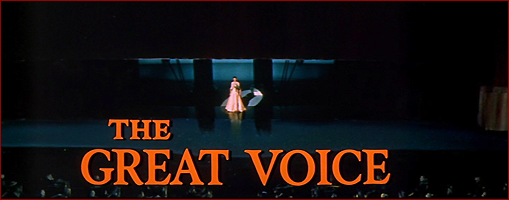
ORIGINS
The storyline of A Star Is
Born began life in the early 1930’s, when producer
David O. Selznick decided to make a serious film about Hollywood
of the day. He tapped former reporter Adela Rogers St. Johns
who came up with a story based on the marriage of silent
star Colleen Moore and alcoholic producer John McCormick.
The basic storyline was fleshed out with other stories about
other known alcoholic filmmakers, including the well known
director Marshall “Mickey”
Nielan. 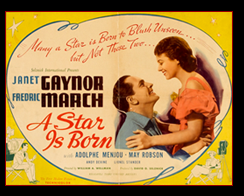 More Hollywood lore was added when director Lowell
Sherman who portrayed the director in the film (which would
become the
“Norman Maine” character), based many of the traits
of his characterization on his brother-in-law (and well known
drinker) John Barrymore. Selznick himself added some of his
own memories of Hollywood scandals. More Hollywood lore was added when director Lowell
Sherman who portrayed the director in the film (which would
become the
“Norman Maine” character), based many of the traits
of his characterization on his brother-in-law (and well known
drinker) John Barrymore. Selznick himself added some of his
own memories of Hollywood scandals.
George Cukor was assigned to direct. After attempting to provide
a comeback for silent film star Clara Bow (Selznick was forced
to forgo this due to Bow’s own alcoholism and resulting
weight gain), Constance Bennett was given the female lead as
“Mary Evans”, a waitress who’s “discovered”
by director Maximilian Carey (Lowell Sherman).
The
film was one of Cukor’s first real hits, helping
to establish him as a soon-to-be great director,
and it would have a great influence on his
work on the 1954 remake.
In 1937 Selznick, still fascinated with the story, returned
to it for his Technicolor hit A Star Is Born starring
Janet Gaynor and Frederick March. Directed by William Wellman,
this is the film that would form the basis for the subsequent
remakes (Dorothy Parker was among the writers who helped make
significant changes in the screenplay). The story was changed
a little bit, but the
basic theme remained the same. The 1937 version was a huge
hit, garnering Oscar nominations for Best Film, Best Actor, & Best
Actress among others.
|
1954
REMAKE
The seeds of the 1954 remake actually
go back to 1942. On December 28, 1942 Judy Garland and Walter
Pigeon starred in a radio version of the 1937 film. Like the
1937 film, the radio version was non-musical, and Judy loved
the story so much that she tried (several times) to convince
MGM to do a musical remake. MGM flatly refused, feeling that
the public would never accept sweet girl-next-door Garland
as the wife of an alcoholic.
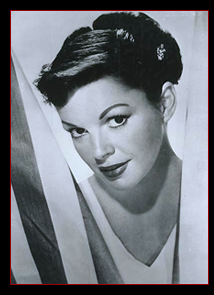 Segue to 1952. Judy had just triumphed at the London Palladium
and The Palace Theater in New York after leaving MGM in 1950
as a “Hollywood has-been” (at the tender age of
28!!). She was such a huge hit that she almost single handedly
“invented” the one-woman concert show of the latter
20th century. With her new mature image, Garland and husband
Sid Luft began to shop around the idea for Judy’s comeback
to films. Judy suggested Star and Jack Warner of Warner
Bros decided to finance the film. Judy and Sid formed their
own production company “Transcona Enterprises” and
entered into a contract with Warner Bros to co-produce films,
with Star being the first. Segue to 1952. Judy had just triumphed at the London Palladium
and The Palace Theater in New York after leaving MGM in 1950
as a “Hollywood has-been” (at the tender age of
28!!). She was such a huge hit that she almost single handedly
“invented” the one-woman concert show of the latter
20th century. With her new mature image, Garland and husband
Sid Luft began to shop around the idea for Judy’s comeback
to films. Judy suggested Star and Jack Warner of Warner
Bros decided to finance the film. Judy and Sid formed their
own production company “Transcona Enterprises” and
entered into a contract with Warner Bros to co-produce films,
with Star being the first.
Cary Grant was the first choice for the pivotal role of “Norman
Maine” – the actor who discovers Vicki Lester (Judy)
and helps to make her a star, while his own career is on the
downslide due to his alcoholism. Grant graciously declined,
feeling he wouldn't be right for the part, so James Mason
got the role. Prior to Mason getting the role, many other leading
actors of the day were considered, including Laurence Olivier,
Richard Burton, Tyrone Power & Marlon Brando.
Production
began in the summer of 1953. Almost immediately
the problems did too. At the time, much of the
blame for the delays was put on Judy (due to her reputation),
but it has since been revealed that Judy was
more of a scapegoat than the real “problem.”
One of the main problems with the film was
studio chief Jack Warner. Basically Sid and
Judy rubbed Warner the wrong way on several
occasions and several issues, and Warner eventually
lost interest in the projecct, ignoring the
fact that he was sinking a ton of money into
it and gambling his and the studio's reputation. One thing the studio chiefs had was ego!
Perhaps the biggest reason for the initial delays and bloated budget was that about a month into shooting, Warner
decided to scrap everything and
re-shoot in CinemaScope. CinemaScope was the was the big new (and expensive)
widescreen process that was seen by many studio heads as the
answer to the red ink caused by post-war television keeping
the public at home. Warner also wanted to use their new “Warner
Color” process, but luckily Cukor and company prevailed
and far superior Technicolor was used.
NOTE: Cukor hated CinemaScope, remarking
that he felt like he was shooting through a
coffin. His solution was to frame much
of the far sides of the film in shadows, creating
a singular mood. In other scenes he would
fill the sides with visuals that would draw
the action in to the actors. This makes sense
because A Star Is Born is a character
driven story, not a big “wide-screen
epic” as was popular for CinemaScope
pictures at that time.
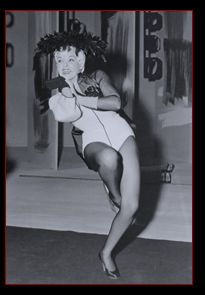 Judy did cause some delays due to her famous insecurities.
A lot was riding on this film. Three years earlier, Hollywood
had written her off as a casualty of fame and
fortune and growing up on a studio backlot. After her great
concert comebacks of 1951 & 1952, Judy knew that Star was
her one chance to prove to Hollywood that she could still
rally to the occasion and carry a film. As a result, she sometimes
had to be coaxed onto the set to perform. But Judy wasn’t
a temperamental diva as so many people have assumed. A great number
of Judy’s contemporaries have pointed out that she was
such a professional she always knew if she was going to be
good or not. If she wasn’t, she didn’t want to
perform. Judy would actually save time by being able to come on
to the set and perform brilliantly in the least amount of takes
necessary. Judy did cause some delays due to her famous insecurities.
A lot was riding on this film. Three years earlier, Hollywood
had written her off as a casualty of fame and
fortune and growing up on a studio backlot. After her great
concert comebacks of 1951 & 1952, Judy knew that Star was
her one chance to prove to Hollywood that she could still
rally to the occasion and carry a film. As a result, she sometimes
had to be coaxed onto the set to perform. But Judy wasn’t
a temperamental diva as so many people have assumed. A great number
of Judy’s contemporaries have pointed out that she was
such a professional she always knew if she was going to be
good or not. If she wasn’t, she didn’t want to
perform. Judy would actually save time by being able to come on
to the set and perform brilliantly in the least amount of takes
necessary.
The various delays, along with Sid Luft’s inexperience
as a producer, exasperated Warner.
Warner was irritated not only that the film was taking a long
time to make and going over budget, but that “producer” Luft was
spending most of his time at the race track and not taking
control of the project.
In spite of all of this, something was happening. Cukor, Judy
and the rest of the production were slowly making a masterpiece.
This was Cukor’s first musical, and his first film in
color. He ran with it, taking full advantage of the CinemaScope screen,
state-of-the-art stereo, and Judy’s talent. Cukor created
a film that has a singular view of Hollywood. A realism permeates the film that is missing in most films about Hollywood, before or since.
When the film was finished, even Warner was happy with the
results. All agreed it was going to be a huge hit. All agreed
that it was a masterpiece of filmmaking. And most of all, all
agreed that it was Judy’s greatest performance.
Only one thing remained: There was no “proof” of
Vicki Lester (Judy) becoming a star. As it was, the film showed
Vicki and Norman (James Mason) going to see Vicki’s film
debut, then it cut to the theater lobby after the film, with
the crowds lauding Vicki’s performance. The decision
was made to film a “payoff” number showing why
Vicki became such a big star.
They came up with the “Born In A Trunk” sequence
– which was Warner Bros. answer to the popular “ballets”
in the current MGM musicals. This added more time to the already
long film, making it a total of 196 minutes long by the time
of the previews.
|
top of page
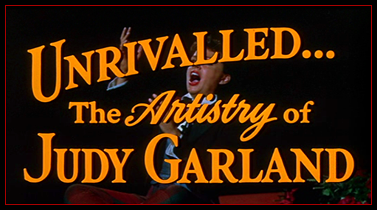 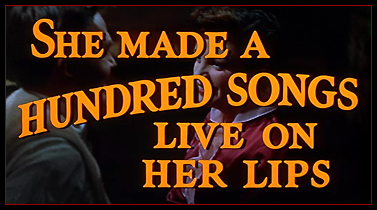
THE
PREMIERE AND AFTER
The previews received unanimous praise. Everyone agreed that
Judy, Cukor and Mason had given their best and created a masterpiece
of filmmaking unlike anything anyone had seen. Even today, the film has its own singular look and style.
When
the film premiered on September 29, 1954 it
was the biggest premiere in Hollywood history.
It was the first to be televised in its
entirety. All of the stars of the day were
there. George Jessel (who in 1935 had renamed “The
Gumm Sisters”
“The Garland Sisters” – and thus Frances
Gumm became Frances Garland who became Judy Garland), assisted
Jack Carson (“Libby” in the film) in introducing
the galaxy of stars on their way into the theater. All were
heaping praise and accolades on Judy. Everyone seemed excited
and happy to have Judy back.
When the film went into general release, it had the fortune
of glowing reviews and a Life Magazine cover story
(Judy’s second cover, her first was in 1944 for Meet
Me In St. Louis) to help promote it. But that was about
all.
Early on, theater owners began complaining about the length
of the film. This meant fewer showings per day, which meant
less money for Warners. Studio boss Harry Warner had his fill of Garland
and Luft, and since Cukor and everyone else had left for other
projects Harry had his brother Jack order the theaters to
return the film to the studio. The studio then chopped out
chunks of the film to cut it down to 154 minutes. The cut footage
was allegedly destroyed. 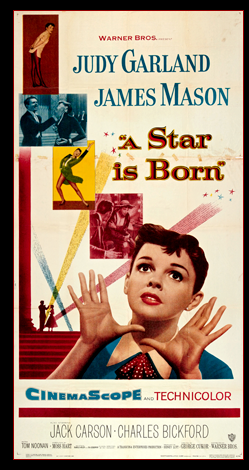 I personally believe this was his vindictiveness
to “get back” at Judy and Sid. Never has there
been such a blatant disregard for the work of artists by an executive of a major studio than
when Warner chopped out chunks of the narrative and musical
numbers for time’s sake. I personally believe this was his vindictiveness
to “get back” at Judy and Sid. Never has there
been such a blatant disregard for the work of artists by an executive of a major studio than
when Warner chopped out chunks of the narrative and musical
numbers for time’s sake.
Cukor
and Judy were so upset and hurt by the cuts,
they vowed never to see their butchered masterpiece
again. Cukor later remarked that he could have
gone in and trimmed several scenes to make
the running time shorter but not jeopardize
the narrative. But the studio wasn't about
to bring him back on the payroll.
The cut version was choppy and at times nonsensical. Word of
mouth spread that the version in general release was not as
great as initially reported. Money began to drop off.Added
to the cost of the picture was the decision to re-shoot in
CinemaScope, the added “Born In A Trunk” sequence,
the costs in having all the prints shipped back and cut to
the shorter version then shipped back out, and the promotions – which
all added up to the film not making a profit.
Judy and Sid’s Transcona Enterprises would not make another
film.
Jack Warner was so “over it” that when awards season
rolled around, Warner Bros. didn’t place any ads promoting
what was their biggest film of the year.
Still, Judy and James Mason both received Oscar nominations,
and the film was also nominated for Art Direction, Set Decoration,
Costume Design, Musical Score and Song ("The Man That
Got Away"). It wouldn't win any of them. Oddly,
neither George Cukor nor the film itself received nominations.
This
oversight was partly due to a sort of “backlash” against
the film. Warner would tell anyone who listened
how Judy and Sid were reckless and irresponsible
while making the film, and that was the reason
for the high costs (ignoring his own part in
all of it). Plus, everyone in Hollywood knew
that the final release version was not the
same film they all loved at the premiere and
immediately afterwards.
However, everyone unaimously agreed that Judy gave not only her own personal
best, but one of the greatest performances in screen history,
musical or non-musical.
Judy lost the Oscar to Grace Kelly. Legends abound. One
book that I saw quite a few years back about the
Oscars reported either Hedda Hopper or Louella Parsons stating
that they knew for a fact that most of the MGM studio executives
supposedly voted against Judy – their noses out of joint
that she would go to Warner Bros. rather than MGM to make her
comeback masterpiece. Another legend is that many people in Hollywood
felt that Judy was a spoiled Hollywood brat who still created
temperamental, unprofessional delays on every film she made and this was her comeuppance. Other scenarios have Grace Kelly
as the “new hot thing” in Hollywood (she was) who
was willing to “de-glamourize” herself for a dramatic
role – and Grace was indeed a hot commodity, who allegedly had slept her way to the top (I told you there would be
some
“legends” reported). Whether these or any of the
other stories are really true is beside the point. The main
point is that this really was “make or break” for
Judy in Hollywood. Losing the Oscar was proof to her that Hollywood
didn’t really want her back.
Most of Judy's contemporaries have gone on record stating that
they all thought that Judy should win the Oscar, and they thought
that she would. The shock of Judy not winning was such that
she received dozens of telegrams of “condolences”.
The most famous being the telegram from Groucho Marx, which
read “[this is] the greatest robbery since the Brinks.”
|
top of page
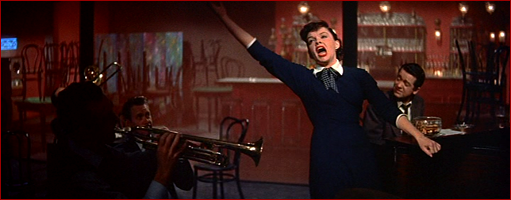
SEGUE
TO 1983
In the years since its release, A
Star Is Born would be reissued a few times and then
sold to TV. Television would give it the ultimate death knell
when it would trim even MORE footage to make it fit into
a conventional 2 hour spot with commercials. Long before
the days of “home entertainment” and “letterboxing” the
film would suffer (as all CinemaScope films did) by having
half of its picture cut off to fit on TV.
For years, film students, film buffs, experts, and the curious,
would scratch their heads at what they saw on TV as “Judy
Garland’s greatest role”. Many would wonder just
what became of the original film?
Enter Ronald Haver. He convinced the American Film Institute to
make A Star Is Born the first in their new efforts
in film restoration.
The story of the restoration is detailed by Mr. Haver himself
in his article for American Film Magazine in 1983. It’s
a condensed version of his book “A Star Is Born: The
Making of the 1954 Movie and Its 1983 Restoration” – Click here to read this fascinating article.
Sadly, Judy and Cukor didn’t live long enough to see
their masterpiece come back to life in as complete a form as
possible. Luckily for all of us, people such as Ronald Haver
and many, many others have been dedicated to preserving film
for generations come.
A Star Is Born is a lasting testament
to the incredible artistry of Judy Garland, James Mason,
George Cukor, and the rest of the dedicated men and women
who, in 1953/1954 created a one-of-a-kind film masterpiece.
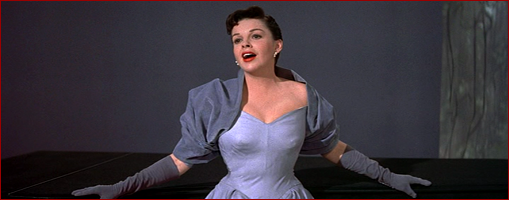

top of page

|

Date |
Event |
August
1952 |
Judy
and husband Sid Luft have just formed a new production
company,
"Transcona" and they enter into a production
deal with Warner Bros. to make 9 films, three of which
are to star Judy. The first to be A Star Is Born.
Another title for the 9 proposed was Sid's long running
idea to make the story of the horse "Man O'War". |
09/08/52 |
The
above deal is "formally" announced. |
December
1952 |
A
deal is struck where Judy would be paid $100,000
for Star, and Transcona would receive half
of the film's profits. |
11/21/52 |
Judy
gives birth to her second child, Lorna Luft. |
01/03/53 |
Judy
is in New York at the St. Regis Hotel and sings at
Jack Warner's daughter's "Coming-Out" Party
hosted by Elsa Maxwell. |
01/05/53 |
Judy's
mother, Ethel Gumm, has a heart attack and dies in
Santa Monica, California. In spite of recent estrangement,
and a tangled
"love/hate" relationship with her mother, Judy
is devastated by the loss. |
01/05/53 |
Ethel
Gumm is laid to rest. |
04/03/53 |
Judy
records "Send My Baby Back To Me", "Without
A Memory",
"Go Home Joe", and "Heartbroken",
her only singles under a new contract with Columbia Records.
The contract includes the release of the original soundtrack
recording of A Star Is Born. These would be
the only work of Judy's that Columbia would release.
NOTE: "Heartbroken" was
co-written by Fred Ebb, who would later write most of
Judy's daughter Liza's big hits, as well as the scores
for many Broadway (and eventually film) hit musicals
including "Cabaret"
and "Chicago". |
08/18/53 |
Judy's
first official day of work on A Star Is Born. |
08/21/53 |
Judy
records "Here's What I'm Here For" in her
first recording session for A Star Is Born.
Because Star was Warners' big state-of-the
art film, the score was recorded in true stereo with
a huge orchestra under the direction of Ray Heindorf.
Unfortunately, the original recording masters were
destroyed along with the footage when the sequence
was cut by Jack Warner (Warner Bros. was not as diligent
in saving "unwanted" material as MGM was).
The stereo music & effects track does exist for
the edited version. When the film was restored and
presented in 1983, this song as well as "Lose
That Long Face" were "stereo enhanced". |
08/22/53 |
Judy
records "Gotta Have Me Go With You". |
09/04/53 |
Judy
records "The Man That Got Away". |
09/04/53
thru
10/12/53 |
Pre-production
work continues on A Star Is Born. Including
many wardrobe fittings, make-up tests, work with the
music and songs, and much more.
NOTE: For a more detailed
account of the shooting schedule
of A Star Is Born your best bets
would be to get the Ronald Haver
book "A
Star Is Born - The Making of the
1953 Film and its 1983 Restoration" as
well as Scott Schechter's book
"Judy
Garland - The Day by Day Chronicle of a Legend".
Both books are excellent and worth every penny. |
| 10/12/53 |
First
day of actual filming. First scenes to be shot are
of "Esther"
having her first taste of filming for the movies with
her comical scene sitting in train waving goodbye out
the window in the snow. |
| 10/20/53 |
First
filming of "The Man That Got Away". The
number was filmed in both "standard ratio" and "CinemaScope".
Neither of these was used in the final film, but
upon viewing the CinemaScope version the following
day, Jack Warner (Studio Chief of Warner Bros.) decided
to have the film shot in CinemaScope and Technicolor
- which meant that the previous few weeks of filming
had to be scrapped and re-shot. |
10/27
- 10/29
1953 |
"The
Man That Got Away" is re-shot, this time with
a different composition in lighting and staging,
and Judy's costume. The October 20th footage had
Judy in a light skirt and pink blouse. This time
she's in a brown dress. Judy would do 27 takes of
the number during these three days. Each time she
would exhaust herself by singing along with her own
voice on the playback disc. Almost as if she were
competing with herself. Director George Cukor would
later marvel at Judy's way of "lip synching". |
November
1953
through
07/28/54 |
|
| 11/23/53 |
Judy
records "It's A New World" and "Somewhere
There's A Someone". |
| 12/05/53 |
Judy
did more takes of the song "Here's What I'm
Here For". |
| 12/07/53 |
Judy
did more takes of the song "It's A New World". |
| 12/30/53
- 01/05/54 |
Filming
on location at the Shrine Auditorium. On December
30th, 1953 Judy would film the "Gotta Have Me
Go With You"
number. On January 2, 1954 she would film the famous
"Hello everybody, this is MRS. Norman Maine". |
| 02/03/54 |
On
location in Laguna, California. The scenes shot on
this day were deleted prior to the original release
of the film. These were scenes of Judy and James
having a picnic on the beach, where Judy sings a
reprise of "It's A New World". The footage
no longer exists but production stills do, and one
particular color photo of a close embrace between
Judy and James Mason was used many times in promotional
materials throughout the years. |
| 02/04/53 |
Filming
of the
"Somewhere There's A Someone" number. Filming
for this sequence would continue through February 12,
1954. |
| 02/19
- 20/54 |
Retakes
of the
"Downbeat Club" sequence. This includes "The
Man That Got Away". According to the information
provided by Ronald Haver for the restoration, the version
seen in the film was shot at this time. However, according
to Scott Schechter's "Day-By-Day Chronicle"
book, the version seen in the film was shot in October
1953, during the 3-day filming. It makes sense that the
film version probably was done here, in February of 1954,
as the entire composition of the number, not to mention
Judy's dress and "look" (she looks as thought
she's lost some weight when compared to the earlier versions)
are completely different than the October footage.
More retakes in the "Downbeat Club" would be
done on February 27th - it's possible the song was re-done
here as well. |
| 03/01/54 |
Judy
records more takes of "Lose That Long Face". |
| 03/10/54 |
Filming
starts on the "Lose That Long Face" number.
It would be filmed on and off, with retakes, through
May 6, 1954.
Also in May of 1954, Judy begins rehearsals for the
"Born In A Trunk" sequence. |
| 05/28/54 |
Judy
begins recording the songs and narraration for "Born
In A Trunk". |
| 06/10/54 |
Judy's
birthday. She turns 32. |
| 06/14/54 |
Judy records "Swanee"
and "Black Bottom".
NOTE: A wonderful
outtake from this recording
session is on the "Judy"
CD box set from 32 Records. Judy is recording
a "pick-up" of part of the song and something
tickles her into laughing and cracking up with
the crew. She then tears into the pick-up as if
nothing happened - and in incredible voice.
|
| 06/15/54 |
Judy
records "I'll Get By" and "You Took
Advantage Of Me"
for "Born In A Trunk". |
| 06/16/54 |
Judy
records "When My Sugar Walks Down The Street"
and "Peanut Vendor".
NOTE: "When My Sugar" would
be cut from the sequence prior
to the original release of the
film. The cut footage can be seen on the DVD.
NOTE: At this time, Judy and Sid were close friends of
Humphrey Bogart and Lauren Bacall. Legend has it that
in the "Peanut Vendor" sequence, the voice
of the drunk "Sing 'Melancholy Baby'" is none
other than Bogart himself, done on a lark for Judy. |
| 06/18/54 |
Judy
records more of the narration for "Born In A Trunk". |
| 06/30/54 |
Filming
begins on "Swanee" for the "Born In
A Trunk"
sequence. Filming of "Swanee" would continue
through July 7th. |
| 07/12/54 |
Filming
begins on "Black Bottom" for the "Born
In A Trunk" sequence. |
| 07/13/54 |
Filming
continues on "Black Bottom" for the "Born
In A Trunk" sequence. |
| 07/15/54 |
Judy
records "Melancholy Baby". |
| 07/17/54 |
Filming
of "Melancholy Baby" for the "Born In
A Trunk" sequence. |
07/21/54
&
07/22/54 |
Filming
of the "Born In A Trunk" scenes of Judy in
the agent's offices and running around the "hallways". |
| 07/28/54 |
Final
day of filming! Scenes shot were for the "Born
In A Trunk" sequence: "Judy's Olio";
retakes of the "Second Nightclub"; and retakes
of the
"Peanut Vendor" sequence. |
| 08/02/54 |
First
preview of A Star Is Born in Hunnigton Park,
California. At this time, the film ran 196 minutes
(3 hours and 16 minutes). Preview cards were ecstatic,
with someone writing "Don't cut a single minute
of it...". This simple statement would have particular
resonance in the coming months, when everyone seemed
to want to cut something out of the film. |
| 08/03/54 |
Second
preview at the Encino Theater on Ventura Blvd, Los
Angeles, California. More raves on the preview cards.
Prior to the premiere, 15 minutes would be cut from the
film, making its running time 181 minutes. |
| 09/29/54 |
World
Premiere of A Star Is Born at the Pantages
Theater, Hollywood, California. This was the "Premiere
to end all premieres"! It was the first to be
telecast live on television (by NBC-TV). Every star
in Hollywood came out for it. Old and young alike.
Jack Carson ("Libby"
in the film) helped with the introductions of the stars
to the TV audience as they arrived (very similar to the
"Benefit Sequence" that opens the film). Everyone
had raves for Judy (some stars had already seen the film).
Judy arrived with Sid and Jack Warner. The entire broadcast
can be seen on the DVD.
Afterwards, there was a post-premiere party at the Coconut
Grove - footage of this is on the DVD as
well. |
| 10/11/54 |
The
New York premiere was held at two theaters simultaneously:
the Victoria and the Capital. George Jessel was the
emcee for the post-premiere dinner at the Waldorf. |
| October
1954 |
Harry
Warner, responding to theater owner's complaints that
the film was too long (so therefore they couldn't get
as many showings per day as a normal length film),
ordered cuts to be made. Judy would later say that
they didn't
"cut" the film "Harry Warner gummed it
to death"!
The cuts were made without Cukor's assistance, with Warners
taking out chunks of film (supposedly per Harry Warner)
which destroyed major developments in the narrative and
made the film uneven. He even ordered that the songs "Here's
What I'm Here For" (and its charming proposal scene)
and "Lose That Long Face" (the full number
AND the reprise) were to be cut as well. 27 minutes in
all were cut.
The cut version was then shipped back out to theaters
(the studio had gotten all of the complete versions sent
back to the studio prior to this). That version was the
"final" version of the film. Word-of-mouth
spread that this was not the film originally released,
and business dropped off. The film would be considered
a financial failure (even though it technically made
more money than it had cost). Both Judy Garland and George
Cukor vowed never to see the cut version of their masterpiece. |
| 03/08/55 |
Judy
is presented with Look magazine's Best Actress Award
for A Star Is Born. Judy would also received
Best Actress Awards from Film Daily (through
their poll) and Box Office Publication. Not
to mention the all important "Golden Globe Award".
This was in the day when there were not as many awards
and
"awards shows" as there are now, and Judy's
sweep was considered a precurser to the Academy Awards'
Oscar for Best Actress. |
| 3/29/54 |
Judy
gives birth to her third (and final) child Joseph Wiley
Luft. |
| 3/30/54 |
The "infamous" Academy
Awards, televised live on NBC-TV. Judy was still
in the hospital, and the network was so sure that
she should win, they had a crew go over and set up
her hospital room for a direct live feed so they
could show Judy's acceptance from her hospital bed.
The rest is legend. Grace Kelly was announced as the
winner for The Country Girl. Judy would later
make fun of the fact that within just a few minutes she
was "all alone" (Sid was with her) because
as soon as Grace Kelly's name was announced, the TV crew
swiftly took everything down and disappeared, without
saying one single word.
The famous telegram by Groucho Marx stated that it was
"the biggest robbery since the Brinks".
Judy took it on the chin, and always said that her son
Joey was her own special "Oscar".
The story would become one of Judy's favorite anecdotes
to tell in concert and on TV, showing off her self-deprecating
humor. |
| 07/7/83 |
The
premiere of the recently restored version of the film
in New York City. Click here to go to the special "Restoration Page"
and read all about the restoration as told by the
man who was instrumental in finding as much missing footage
as possible, the late Ronald Haver.
Post 1983 items of interest:
1984: The restored version was released
on VHS and laser (in the then-popular "Pan & Scan" format,
meaning it was not presented in "widescreen").
1988: The "complete" stereo
soundtrack, taken directly from the film's stereo soundtrack, was released on CD.
1999: The film was finally released
in widescreen (letterbox) format on home
video, DVD, and briefly on laser disc.
This would be the first time that the home
entertainment version would include the
three cut versions of "The Man That
Got Away", the cut song "When
My Sugar Walks Down The Street" (all
with restored widescreen picture and sound),
as well as containing the complete NBC-TV
Pantages Premier footage and the post-premiere
Coconut Grove footage. .
2004: The newly restored and expanded
CD version of the soundtrack is released.
It includes most of the background scoring,
a rehearsal recording of "Trinidad
Coconut Oil Shampoo", the outtake "When
My Sugar Walks Down The Street" and much more.
2010: The film gets an amazing new restoration and DVD release, plus its premiere release on Blu-ray with never-before seen extras. It also is chosen as the big opening night film for the inaugural Turner Classic Movies Film Festival in Los Angeles. |
|
|
top of page


|
This page is dedicated to the late Ronald Haver. Haver was mastermind and the driving forece behind the 1983 restoration.
The article reads almost like a detective novel, detailing
the incredible story of the search for missing footage and the
amazing (and sometimes frustrating) results of that search.
Click on the 1983 American Film Magazine on the left to read
Mr. Haver's own account of the restoration of A Star Is Born. The article is an abridged version of his fantastic book "A
Star Is Born - The Making of the 1953 Film and its 1983
Restoration." Be sure to pick up a copy online - it's a definite "must have"!!
|

 The photo galleries are split into
the following five categories:
The photo galleries are split into
the following five categories:
PRODUCTION PHOTOS (Behind the Scenes)
Featuring photos taken during the extensive production
period, including rare shots from the very early days of filming
before the switch to Cinemascope, snapshots, costume sketches, various premiere photos and items, and more. |
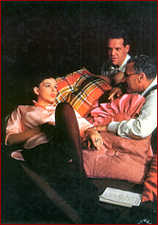 |
 |
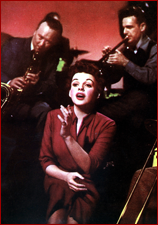 |
ON SET PHOTOS (Scenes from the Film)
Featuring photos of scenes from the film (and outtakes) taken on-set during filming. Most were used in various promotional media such as lobby cards, posters, and news articles. |
 |
PORTRAIT GALLERY
Studio "Glamour Shots" or "Portraits" used for various promotional media, similar to the on set photos featured in the gallery above, but usually photographed in a photo studio setting. |
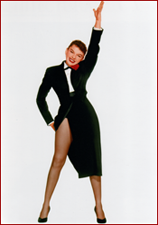 |
 |
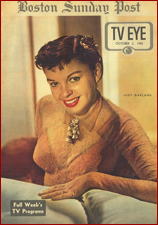 |
PRINT MEDIA
Posters, lobby cards, magazines, press sheets, programs, and more. |
 |
top of page

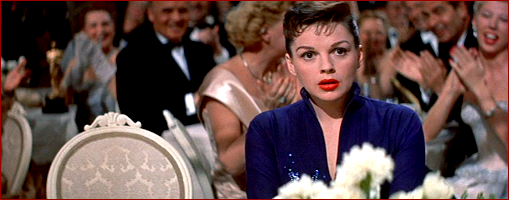

Cast
Judy Garland ... Esther Blodgett/Vicki Lester
James Mason ... Norman Maine
Jack Carson ... Matt Libby
 Charles Bickford ... Oliver Niles Charles Bickford ... Oliver Niles
Tom Noonan ... Danny McGuire
with:
Lucy Marlow ... Lola Lavery
Amanda Blake ... Miss Ettinger
Irving Bacon ... Graves
Hazel Shermet ... Libby's Secretary
Wilton Graff ... Emcee
Grady Sutton ... Artie Carver
James Brown ... Glenn Williams
Lotus Robb ... Miss Markham
Production Staff
Produced by: Sidney Luft
Associate Producer: Vern Alves
Directed by: George Cukor
Screenplay by: Moss Hart (based on the screenplay by Dorothy
Parker, Alan Campbell and Robert Carson, from a story by William
A. Wellman and Robert Carson)
Art Director: Malcolm Bert
Set Decorator: George James Hopkins
Production Design: Gene Allen
Cinematographer: Sam Leavitt
Photographed in: CinemaScope and Eastmancolor (1954-55 prints
by Technicolor)
Special Visual and Color Consultant: George Hoyningen-Huene
Editor: Folmar Blangsted
Costumes: Jean Louis, Mary Ann Nyberg
Costumes for "Born in a Trunk": Irene Sharaff
Assistant Directors: Earl Bellamy, Edward Graham, Russell Llewellyn
Dance Director: Richard Barstow
Songs:
"Born in a Trunk" by Leonard Gershe and Roger Edens
"Gotta Have Me Go with You",
"The Man That Got Away",
"Here's What I'm Here For",
"Someone at Last",
"It's a New World",
"Lose That Long Face"
by Harold Arlen (music) and Ira Gershwin (lyrics)
Musical Director: Ray Heindorf
Orchestral Arrangements: Skip Martin
Vocal Arrangements: Jack Cathcart
Additional Choreography: Eugene Loring
Complete cast list (in order of appearance):
Jerry DeCoe, Wayne Taylor, Melvin Pogue, Janet Stewart, Sylvia
Arslan, Colette McMahon [Autograph Seekers]; George Fisher [Announcer];
Jim Hyland [Assistant Announcer]; Lucy Marlow [Lola Lavery];
Charles Bickford [Oliver Niles]; Jack Carson [Matt Libby]; Joan
Shawlee [Woman Announcer]; Sam Colt [Store Manager]; Jay Johnson
[Musician]; James Brown [Glenn Williams]; James Mason [Norman
Maine]; Tommy Noonan [Danny McGuire]; Judy Garland [Esther Blodgett/Vicki
Lester]; Tom Kingston, George Kitchell, Robert Dumas, Duff Whitney
[Reporters]; Irving Bacon [Graves]; Louis Mason [Doorman]; Frank
Puglia [Bruno]; Michael Hathaway [Agent]; Havis Davenport [Starlet];
Elmera Smith [Pasadena Girl]; Jack Pepper [Chef]; Dub Taylor
[Driver]; Louis Jean Heydt [Director]; Don Richards [Cameraman];
Bob Jellison [Eddie]; Don Shelton [TV Director]; Robert Stevenson
[Boom Man]; Chick Chandler [Man in Car]; Kathryn Card [Landlady];
Geraldine Wall [Woman]; Nancy Kulp, Mary Young [Boarding House
Women]; Alan DeWitt [1st Makeup Man]; Rudy Anders [2nd Makeup
Man]; Joe Dougherty [3rd Makeup Man]; Ross Carmichael [Photographer];
Lotus Robb [Miss Markham]; Blythe Daly [Miss Fusselow]; Leonard
Penn [Director]; Eddie Dew [Cameraman]; Charles Conrad [Assistant
Director]; George Becwar [Assistant Director]; Charles Halton
[1st Cashier]; Joseph Mell [2nd Cashier]; Olin Howlin [Charley];
Dick Simmons [Director]; Joe Greene [1st Agent]; Joe Hamilton
[2nd Agent]; Phil Arnold
[3rd Agent]; Jack Baker [Father]; Ila McAvoy [Mother]; Nadene
Ashdown [Esther, Age 6]; Heidi Meadows [Esther, Age 3]; Jack
Kenney [1st Night Club Man]; Dick Ryan [2nd Night Club Man];
Ted Thorpe, David Armstrong, Bob Hoy, Larry Rio [Sound Men];
Al Thompson [1st Vagrant]; Oscar Blank [2nd Vagrant]; Emerson
Treacy [Justice of the Peace]; Ruth Bradee, Shirley Whitney,
Jean Engstrom, Almeda Fowler, Mae Marsh, Arlene Karr, Paul Levitt,
Rodney Bell, Richard Bauman, Marshall Bradford [Malibu Party
Guests]; Eric Wilton [Butler]; Hazel Shermet [Libby's Secretary];
John Monaghan [Male Secretary]; louis Tomei [1st Signboard Man];
Carey Loftin [2nd Signboard Man]; Strother Martin [Express Man];
Grady Sutton [Artie Carver]; Rex Evans [Emcee]; Amanda Blake
[Susan Ettinger]; Richard Webb [Wallace]; Steve Wyman [Nigel
Peters]; Tom Cound [Price Waterhouse Man]; Mort Mills [Makeup
Man]; Kay Ridhl [Hairdresser]; Tristram Coffin [Director]; Henry
Kulky [Cuddles]; Riza Royce [Secretary]; Charles Watts [Manager];
Sam Colt [Sam]; Paul Bryar [Bartender]; Tom Blakiston [Young
Man]; Pat O'Malley, Gertrude Astor [Race Track Patrons]; Valerie
Vernon [Marian]; Pat Sexton [Bert]; Jack Ellis [Pinkerton Detective];
Frank Ferguson [Judge]; Timothy Farrell [Bailiff]; Percy Helton
[Gregory]; Michael Hall [Rails]; Arthur Space [Clerk]; Nacho
Galindo [Rodriguez]; Benny Burt, Ralph Volkie, Robert Strong
[Reporters at Courtroom]; Josephine Whittell, Sheila Bromley,
Elizabeth Flournoy, Ruth Warren, Cele Kirk, Eileene Stevens,
Helen Eby Rock, Hilda Plowright, Ezelle Poule [Women at Funeral];
Harte Wayne, Louis Mason, Frank Kreig, Paul Brinegar [Men at
Funeral]; Dale Van Sickel, Don Richards, Robert Dumas, Jean Woodley
[Reporters at Shrine Auditorium]; Pat Miller, Al Hill, Frank
Marlowe, Charles Morton, Gordon Finn [Photographers at Shrine
Auditorium]; Wilton Graff [Emcee]
[from A Star Is Born: The Making of
the 1954 Movie and Its 1983 Restoration,
Ronald Haver, Alfred A. Knopf, 1988]
top of page

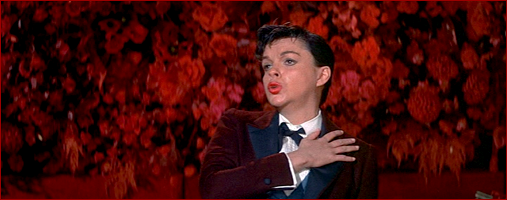

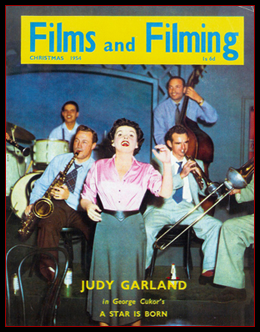 Shooting Schedule: October 1953 - July 1954 Shooting Schedule: October 1953 - July 1954
Premiere: September 29, 1954 at
the RKO Pantages Theatre, Hollywood, California
Cost: $5,019,770
Domestic Gross: $4,355,968
Overseas Gross: $1,556,000
Total Gross: $5,911,968
It was listed by Variety as the #14 grossing film of
1954.
The film was be re-released in 1959, 1964, & 1969.
1981: The "cut" version was released on VHS
and laser disc (in the then-popular "Pan & Scan"
format, meaning it was not presented in "widescreen")
The sound and picture quality was no better than seeing it on
late-night TV. Film preservation was a few years off.
July 7, 1983: The film was re-released
by Warner Bros. and the American Film Institute
as the "kick off"
for their "Decade Of Preservation".
1984: The restored version was released
on VHS and laser (in the then-popular "Pan & Scan" format,
meaning it was not presented in "widescreen").
1988: The "complete" stereo
soundtrack, as taken from the restored
film, was released on CD.
1999: The film was finally released
in widescreen (letterbox) format on home
video, DVD, and briefly on laser disc.
This would be the first time that the home
entertainment version would include the
three cut versions of "The Man That
Got Away", the cut song "When
My Sugar Walks Down The Street" (all
with restored widescreen picture and sound);
as well as containing the complete NBC-TV
Pantages Premier footage and the post-premiere
Coconut Grove footage. NOTE: The
picture and sound quality on this 1999
re-release are far superior to anything
that had previously been issued.
2004: The newly restored and expanded
CD version of the soundtrack is released.
It includes most of the background scoring,
a rehearsal recording of "Trinidad
Coconut Oil Shampoo", the outtake "When
My Sugar Walks Down The Street".
2010: The film gets an amazing new restoration and DVD release. Plus its premiere release on Blu-ray with never-before seen extras. It also is chosen as the big opening night film for the inaugural Turner Classic Movies Film Festival in Los Angeles.

A special THANK YOU to Eric Hemphill
and the many others who graciously shared items from their
extensive collections.
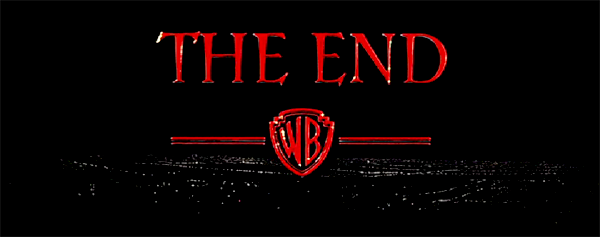
© The Judy Room
top of page
|




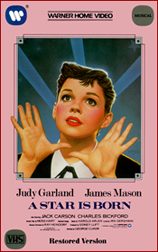

 Charles Bickford ... Oliver Niles
Charles Bickford ... Oliver Niles Shooting Schedule: October 1953 - July 1954
Shooting Schedule: October 1953 - July 1954![]()



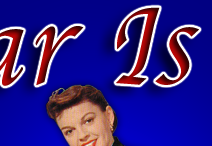

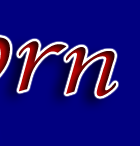









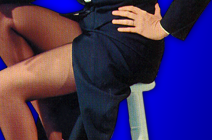





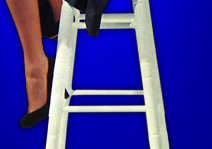












 More Hollywood lore was added when director Lowell
Sherman who portrayed the director in the film (which would
become the
“Norman Maine” character), based many of the traits
of his characterization on his brother-in-law (and well known
drinker) John Barrymore. Selznick himself added some of his
own memories of Hollywood scandals.
More Hollywood lore was added when director Lowell
Sherman who portrayed the director in the film (which would
become the
“Norman Maine” character), based many of the traits
of his characterization on his brother-in-law (and well known
drinker) John Barrymore. Selznick himself added some of his
own memories of Hollywood scandals.






